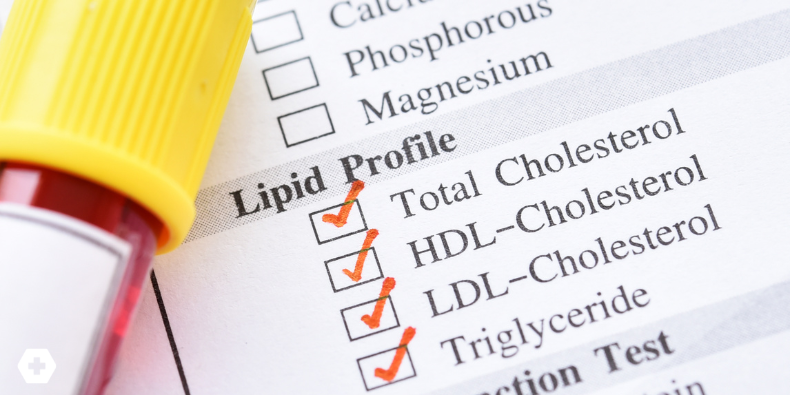
Beyond Statins: Newer Treatments for Dyslipidemia Disease

Managing dyslipidemia often means going beyond just statins, especially for patients with familial hypercholesterolemia (FH), statin intolerance, or persistently high LDL-C levels.
Thankfully, we’ve got more tools in our arsenal. Let’s walk through a few of the newer ones making waves.
Bempedoic Acid: A Statin-Free Option for Lowering Cholesterol
Bempedoic acid is an oral option that lowers LDL-C by targeting an enzyme just upstream of HMG CoA reductase. The cool part? It’s activated by an enzyme not found in muscle tissue, so it avoids the myalgia that can accompany statins.
-
▪️On its own, bempedoic acid cuts LDL-C by about 15%.
-
▪️Combined with ezetimibe, that number climbs up to 36%.
-
▪️It can also be combined with statins—a great option for patients with familial hypercholesterolemia who can’t hit their LDL goals with statins alone.
-
▪️Bempedoic acid has also shown cardiovascular benefits in statin-intolerant patients.
Heads up, though: It can increase uric acid, so be cautious in patients with gout. The evidence base is still much stronger for statins, so while it’s not a statin replacement, it’s a solid backup for patients who just tolerate them.
PCSK9 Inhibitors: Powerful, But Pricey
PCSK9 inhibitors like alirocumab and evolocumab are game-changers for high-risk patients. Monoclonal antibodies that are given subcutaneously every two weeks are indicated for patients who fail statin or statin combination therapy. These are FDA-approved for:
-
▪️Patients with ASCVD
-
▪️FH patients not at LDL goal with maximum tolerated statin
Downsides? The price tag—and yes, prior authorizations. But for patients who need aggressive LDL-C lowering, they’re worth it.
Inclisiran: Two Shots a Year
If compliance is an issue, inclisiran might be your new favorite tool. This siRNA agent works by reducing PCSK9 production and requires just two doses a year, given in the clinic.
Inclisiran lowers LDL-C by about 50%, similar to PCSK9 inhibitors, and is FDA-approved for ASCVD or FH patients not at goal.
We’re still waiting on CV outcomes data, but its twice-yearly dosing makes it a convenient option for many patients.
Icosapent Ethyl: Targeting Triglycerides
For patients with elevated triglycerides, icosapent ethyl is a standout. This purified EPA derivative, added to statins, reduces ASCVD events in high-risk patients, especially those with hypertriglyceridemia. A word of caution for patients with atrial fibrillation or flutter, as this is one of its more serious side effects.
How to Prioritize These Options
Here is a helpful breakdown on what to reach for:
- ▪️Statins remain the go-to therapy for most patients, often paired with ezetimibe.
- ▪️PCSK9 inhibitors are best for aggressive LDL-C lowering.
- ▪️Bempedoic acid is a solid oral alternative for statin-intolerant patients.
- ▪️For triglyceride-focused cases, icosapent ethyl is the clear choice.
- ▪️The jury’s still out on siRNA drugs like inclisiran—we’re still awaiting data on cardiovascular outcomes for patients who take those medications.
Lifestyle Counseling: Where It All Begins
Pharmacologic tools are great, but lifestyle changes still play a huge role in managing cholesterol. Patients need to understand that while dietary cholesterol comes only from animal products, even vegans can have high LDL-C due to genetics.
Encourage heart-healthy eating patterns like the Mediterranean diet, regular exercise, and tobacco cessation. Celebrate small wins—patients need to feel their efforts are paying off. For instance, if a patient cuts fast food from daily to once a week, acknowledge it. Positive reinforcement works!
Key Reminders for PCPs
Primary care providers are often the first line of defense in lipid management. Remember, starting a statin isn’t the endpoint—it’s the starting line. Regularly reassess lipid profiles and ASCVD risk, and don’t overlook factors like diabetes, obesity, and Lp(a).
Also, keep an eye on system-level issues. Current CMS metrics focus on starting statins rather than hitting LDL targets. Advocating for a shift in focus could improve outcomes across the board.
Looking Ahead
The field of dyslipidemia management is evolving fast. From bempedoic acid to inclisiran, we now have more ways to personalize care and improve outcomes, even for patients with high cholesterol that doesn’t budge with statins alone. And more innovations are coming, especially for those tough-to-treat cases involving Lp(a).
Let’s stay curious. Let’s stay current. And let’s keep advocating for treatments that meet patients where they are—and move the needle in a real way.
Practice-Changing Education
Experience education that goes beyond theory. Explore Hippo Education’s offerings below.


